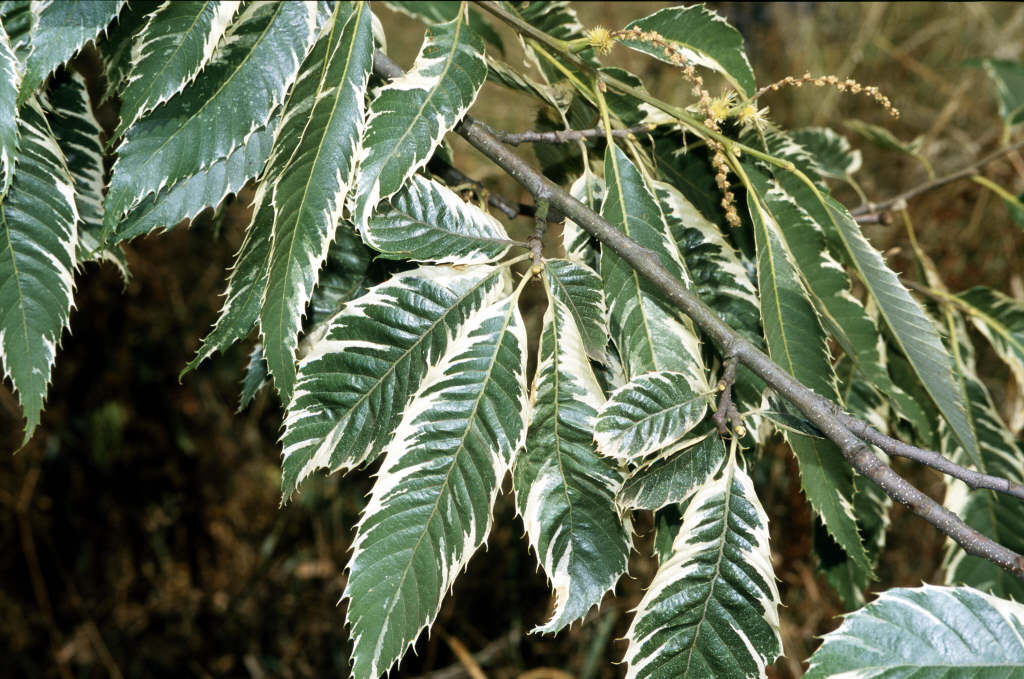Castanea sativa 'Albomarginata' (v)
sweet chestnut 'Albomarginata'
A vigorous deciduous tree with toothed, lance-shaped leaves to 25cm long, margined with creamy-white, and pale yellow catkins in early summer

Buy this plant
Size
Ultimate height
Higher than 12 metresTime to ultimate height
more than 50 yearsUltimate spread
Wider than 8 metresGrowing conditions
Moisture
Well–drainedpH
Acid, NeutralColour & scent
| Stem | Flower | Foliage | Fruit | |
| Spring | Green White Variegated | |||
|---|---|---|---|---|
| Summer | Yellow | Green White Variegated | ||
| Autumn | ||||
| Winter |
Position
- Full sun
Aspect
South–facing or West–facing
Exposure
Exposed or Sheltered Hardiness
H6Botanical details
- Family
- Fagaceae
- Native to GB / Ireland
- No
- Foliage
- Deciduous
- Habit
- Bushy
- Genus
Castanea are fast-growing and large deciduous trees or large shrubs, with long, toothed leaves and conspicuous yellow catkins followed by spiny fruits
- Name status
Accepted
How to grow
Cultivation
Grow in well-drained slighty acid loamy soil in full sun or part shade; tolerant of dry sandy soils
Propagation
Propagate by seed in mid autumn (cultivars will not come true from seed), by grafting in late winter or chip budding from mid to late summer
Suggested planting locations and garden types
- Architectural
- Low Maintenance
Pruning
Pests
Generally pest-free
Diseases
A canker caused by Phytophthora and a leaf spot can be a problem. Susceptible to Chestnut blight.
Get involved
The Royal Horticultural Society is the UK’s leading gardening charity. We aim to enrich everyone’s life through plants, and make the UK a greener and more beautiful place.